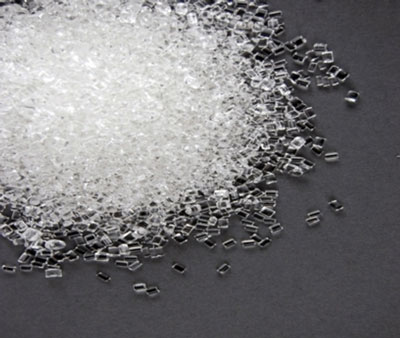| Oct 18, 2013 |
Explainer: what is carbon capture and utilisation?
|
|
(Nanowerk News) Carbon and carbon dioxide are found all around us. All living things contain carbon – it’s one of the essential building blocks of life and is fundamental to many chemical processes. Carbon dioxide (CO2) is produced by respiration and combustion and is used by plants in photosynthesis. However we produce more CO2 than can be absorbed naturally as part of the carbon cycle, hence why atmospheric CO2 levels have risen to the highest point measured for 800,000 years.
|
|
Most everyday items contain carbon, usually as plastics – computers, medicines, cars, clothes, buildings. Most of this carbon originates from petroleum or coal, fossil fuels buried underground for millions of years. We could extract the carbon from the carbon dioxide in the atmosphere instead, but this presents scientific and engineering challenges.
|
|
The predominant view is that CO2 is a waste product, and a polluting one at that, even though small amounts are used to carbonate fizzy drinks, or to make urea or useful industrial solvents. But because of our fossil fuel energy use, we have large amounts of CO2 available that could be put to better use as a resource. This could be done without disrupting the natural carbon cycle, while reusing the carbon to create new products would also decrease fossil fuel use.
|
|
CO2 can be captured from industrial sources such as power plants, steel or cement works, or collected from the air. Then using chemical processes, scientists can extract the carbon from the mix of gases and particles, providing the raw material for new products. Among the products underway are green fuels, methanol, memory foams, plastics, pharmaceuticals, cement and building materials all from “waste” CO2. The process requires chemical catalysts to react with the CO2, but the energy required could be provided by renewables, so the process could be carbon negative.
|
 |
| Solid plastic made from gas.
|
|
This is called Carbon Dioxide Utilisation, or CDU. Ideally, in the future many useful products will be made using waste CO2. The use of CO2 as a feedstock raw material for new products is not a new idea, and has been the focus of research for 40 years. While some of the products are currently being widely tested and will be on the market in the next few years, others are still in the lab. But the range of products that can be produced from CO2 is vast. The choice of what gets manufactured depends on the ability to source cheap, renewable energy to power the chemical process, geographic location, and market demand for the product.
|
|
For example, methanol is a key commodity chemical produced from CO2, and Carbon Recycling International in Iceland and Mitsui Chemicals in Japan are two companies with facilities producing methanol. In Iceland, CRI take advantage of the country’s geothermal power to produce 50,000 litres of methanol per year, which is blended with petrol as a fuel. Mitsui’s methanol is synthesised using exhaust gases from their ethylene production plant and hydrogen produced from water. The company’s aim is to eventually capture and convert 100% of its CO2 emissions to methanol, making the plant carbon neutral.
|
|
The US firm Novomer and Bayer MaterialScience in Germany use the CDU process to create plastics. Novomer creates high-performance polymers that are 50% recycled CO2, which are used by other firms to manufacture plastic bottles, films and laminates. Novomer’s CO2 stream is the waste gases from creating ethanol, using a cobalt catalyst that maximises the amount of CO2 is re-used. Bayer’s so-called “Dream Process” produces polyurethane memory foams using CO2 captured from from RWE’s coal-fired power station in Niederaussem. Bayer intends to bring its first products to market in 2015.
|
|
The scientific and engineering challenges of CO2 utilisation are substantial, but the potential benefits are as large, or larger. If we can solve these challenges and streamline the process and lower costs, CDU could completely reinvent a chemicals industry that is tied to fossil fuel and petroleum feedstocks. This would provide us with a secure source of chemical raw materials for the future, and in doing so would not only reduce the industry’s carbon emissions, but provide a means to safely turn the carbon dioxide warming the atmosphere into useful products.
|


